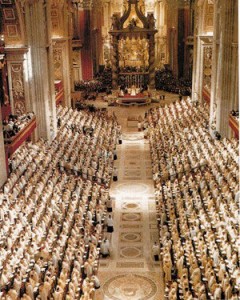 Apostolic Succession of Bishops
Apostolic Succession of Bishops
Podcast: Play in new window | Download (Duration: 1:04 — 1,009.0KB) | Embed
Subscribe: Apple Podcasts | Spotify | Amazon Music | Android | Pandora | iHeartRadio | JioSaavn | Podchaser | Gaana | Podcast Index | Email | TuneIn | Deezer | Anghami | RSS | More
There are many forms of church governance among Christians today. In some churches congregations vote to make decisions; in others the church is run by a group of elders; and in still others, authority resides with bishops.
While all Christians point to Scripture to support their church structure, it is very difficult to determine the precise way the early Church was governed from the Bible alone.
But in the year 110 A.D., only about 50 years after most of the New Testament was written, St. Ignatius of Antioch described the early church leadership in his letters: Each area was led by a single bishop who was accompanied by priests and deacons in ministry.
Ignatius wrote, “let no one do anything of concern to the Church without the bishop. Let that be considered a valid Eucharist which is celebrated by the bishop or by one whom he appoints. … [T]his … is pleasing to God, so that whatever is done will be secure and valid.”1
Ignatius himself was with the apostle John, so we have every reason to trust that this basic church structure which the Catholic Church has to this day comes from the apostles themselves.
1 – Letter to the Smyrnaeans 8:1


